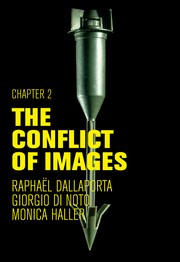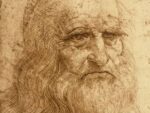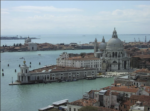Chapter 2 – The Conflict of Images

Come suggerisce il titolo, questa mostra non intende presentare semplicemente metodologie e pratiche legate alla fotografia documentaria di guerra, ma vuole piuttosto riflettere sul conflitto intrinseco che è connesso con la produzione di immagini,
soprattutto quando si tratta di rappresentare la sofferenza e il dolore.
Comunicato stampa
de
Wie der Titel bereits andeutet, möchte diese Ausstellung nicht nur verschiedene Ansätze und Praktiken einer Dokumentarfotografie präsentieren, die sich mit dem Krieg befasst, sondern auch über den Konflikt nachdenken, der mit der Produktion von Bildern insbesondere dort verbunden ist, wo es um die Darstellung von Leiden und Schmerzen geht.
Raphaël Dallaporta, Giorgio Di Noto und Monica Haller sind die drei Künstler/-innen, die wir ausgewählt haben, um eine solche Reflexion zu beginnen. Was sie verbindet – abgesehen davon, dass sie sich für das Medium Fotografie als ihr Hauptausdrucksmittel entschieden haben – ist ihre Zugehörigkeit zur selben Generation. Allesamt nach 1980 geboren, haben sie den Wechsel von der analogen zur digitalen Fotografie miterlebt. Auch haben die Kriege und Konflikte, mit denen sie sich befasst haben, alle nicht auf dem Boden ihrer Heimatländer stattgefunden. Gleichwohl waren die drei Länder – die Vereinigten Staaten, Frankreich und Italien – in diverse auswärtige Kriege verwickelt. Bilder dieser und anderer Konflikte, von denen viele Länder unserer Welt betroffen sind, werden in immer größerem Ausmass gesendet, publiziert, gepostet und gestreamt. Aufgrund der Möglichkeiten des digitalen Zeitalters, in dem wir leben, steht die Menge der produzierten Bilder heute in direkter Beziehung zur Expansion der verschiedenen Medien sowie zu deren technischer Demokratisierung. Wie wir häufig erfahren müssen, kann eine quantitative Zunahme auf Kosten der Qualität gehen. Wie aber Qualität bemessen, wenn wir von Bildern über Krieg und Konflikt sprechen, oder – noch allgemeiner – von Bildern über Unglück und Katastrophen? Eine mögliche Antwort wäre, die Qualität einer Fotografie anhand dessen zu beurteilen, wie sehr sie es vermag Reaktionen hervorzurufen, oder wie heftig sie unsere Gemüter schockiert. Aus dieser Perspektive würde man etwa das kürzlich publik gewordene Foto des tot an einem türkischen Strand liegenden syrischen Kindes als extrem starkes Bild ansehen, da es bei Europäer/-innen – und insbesondere in Deutschland – Empörung auslöste, gefolgt von militärischen Interventionen in Syrien; oder die Videos des Fotografen und Bloggers Mounir Chelbi aus der tunesischen Stadt Sidi Bouzid, die, auf
Facebook gepostet und von al-Jazeera gesendet, 2010 den Arabischen Frühling entfachten.
Die Arbeit von Giorgio Di Noto dreht sich genau um die Amateurvideos, die die diversen Aufstände und nachfolgenden Revolutionen in Nordafrika dokumentieren. The Arab Revolt besteht aus einer Serie von dreissig Polaroid-Fotografien, die er von seinem Computerbildschirm machte, während er dort jene Videos abspielte. Diese Arbeit wirft eine ganze Reihe von Fragen auf. Fotografie spielt eine entscheidende Rolle für unser Erinnern. Wie Susan Sontag formulierte: „Das Problem ist nicht, dass Leute sich mittels Fotografien erinnern, sondern dass sie sich nur an die Fotografien erinnern.“ Und Di Notos Arbeit ist der Versuch, die hektischen Bilderflut, die unser Leben täglich durchdringt, zu verdichten. Indem er bewegte Bilder
in Standbilder verwandelt, während er zugleich das Digitale ins Analoge übersetzt, möchte seine Arbeit eine Reflektion über die Funktion des Fotojournalismus allgemein und des Fotojournalisten im Besonderen ermöglichen. Dabei stellt er die Rolle des Fotografen zur Diskussion, welche nicht unbedingt als Experte vor Ort einen Konflikt dokumentieren muss, sondern auch jenseits der Unmittelbarkeit der Ereignisse mit vorgefundenem Material arbeiten kann, um die Bildbetrachter zu einer reflektierten Beschäftigung mit dem Thema zu bewegen.
Raphaël Dellaporta ist ein französischer Künstler, dessen Arbeiten gesellschaftliche Themen wie die Menschenrechte ebenso behandelt wie eher symbolische Sujets, etwa die Fragilität des Lebens. Er zeigt uns unter dem Titel Antipersonnel ein Archiv von 35 Landminen. Fotografiert als handle es sich um Luxusobjekte und begleitet von detailreichen Beschreibungen, erzeugen diese Bilder einen Rückschluss bei den Betrachter/-innen, welcher sie dazu führt, den ästhetischen Reiz dieser gefährlichen Objekte auf Basis ihres jeweiligen Designs und ihrer Funktion zu hinterfragen.
Monica Hallers Buchreihe Veterans Book Project zeigt nicht bloss die Gräueltaten, sondern auch das tägliche Leben eines US-Soldaten und anderer Personen, die die jüngsten US-amerikanischen Kriege selbst miterlebt haben. Im Rahmen einer Serie von dreizehn Workshops produzierten die Teilnehmer/-innen zwischen 2009 und 2014 über 50 von Haller herausgegebene und kuratierte Bücher. Man erkennt hier die bedeutende Rolle des/der Herausgeber/-in und Kurator/-in in der Fotografie, ebenso wie ihre therapeutischen Möglichkeiten. Die Entscheidung der Künstlerin, die fotografischen und schriftlichen Dokumente dieser Personen zu Büchern zu verarbeiten, anstatt sie als Videos oder Fotodrucke auszustellen, ist angesichts der Härte der Bilder entscheidend. Auf diese Weise überwältigt der Schockeffekt des grausamem Materials die Betrachter/-innen nicht, die im Gegenteil eingeladen sind, sich privat in die Geschichten zu vertiefen und bei den Bildern nur so lange zu verweilen, wie es ihnen erträglich ist.
Trotz oder vielleicht gerade aufgrund ihres jungen Alters zeigen uns Dallaporta, Di Noto und Haller, dass sie mit der alltäglichen Bildüberflutung ebenso vertraut sind wie mit den Debatten zur Ethik undÄsthetik in der Fotografie.
Ihre Arbeiten sind weder naiv noch zynisch. Sie führen uns vor, wie es gelingen kann, sich visuell und in tiefgründiger Weise mit extrem sensiblen Themen in Bezug zu setzen.
it
Come suggerisce il titolo, questa mostra non intende presentare semplicemente metodologie e pratiche legate alla fotografia documentaria di guerra, ma vuole piuttosto riflettere sul conflitto intrinseco che è connesso con la produzione di immagini,
soprattutto quando si tratta di rappresentare la sofferenza e il dolore.
Raphaël Dallaporta, Giorgio Di Noto e Monica Haller sono i tre artisti da noi selezionati per suscitare tali riflessioni. Ciò che li accomuna, al di là della scelta del medium fotografico come principale mezzo d'espressione, è il fatto che appartengono tutti alla medesima generazione. Essendo nati dopo il 1980 hanno vissuto direttamente il passaggio dalla fotografia analogica a quella digitale. Le guerre e i conflitti con cui sono venuti a contatto non sono scoppiati inoltre nei loro Paesi d'origine, per quanto proprio quei tre Paesi (USA, Francia e Italia) siano stati coinvolti in numerose guerre all'estero. Le immagini di quei conflitti, ma anche quelle di altri che dilaniano il nostro mondo, circolano sempre più numerose su pubblicazioni, in televisione, mostre, post e video su Internet. Per effetto dell'era digitale nella quale viviamo, la quantità di immagini che si producono al giorno d'oggi è in diretta relazione con la diffusione dei vari media e con la democratizzazione delle tecnologie. Come ci viene spesso ricordato un incremento della quantità può significare una diminuzione della qualità. Ma come quantificare la qualità quando si parla di immagini di guerra e di conflitti o più in generale di calamità e di catastrofi? Una possibile risposta potrebbe essere quella di giudicare la qualità sulla base del numero di reazioni suscitate o di shock provocati. In quest'ottica la recente immagine del bimbo siriano abbandonato morto su una spiaggia turca può essere considerata una fotografia di grandissimo impatto poiché ha scatenato l'indignazione nella popolazione europea, in particolare in Germania, ed è stata seguita da interventi militari in Siria. Oppure i video pubblicati dal fotografo e blogger tunisino Mounir Chelbi dalla città di Sidi Bouzid in Tunisia, postati su Facebook e trasmessi da Al-Jazeera, che hanno acceso la fiamma della primavera araba nel 2010.
L'opera di Giorgio Di Noto si incentra proprio sui video amatoriali che hanno documentato le diverse insurrezioni e le successive rivoluzioni avvenute in Nordafrica. Il suo progetto, intitolato The Arab Revolt e composto da una serie di 30 polaroid scattate allo schermo del suo computer mentre venivano proiettati quei video, destano un intero repertorio di quesiti. La fotografia ha un ruolo importantissimo per la nostra memoria. Citando Susan Sontag: "Il problema non è che la gente ricorda grazie alla fotografie, ma che ricorda solamente le fotografie." E l'opera di Di Noto rappresenta il tentativo di consolidare il tumultuoso fluire delle immagini che ogni giorno pervadono la nostra vita. Nel momento in cui trasforma immagini in movimento in immagini statiche e converte al contempo il digitale in analogico, il suo lavoro diventa una meditazione sulla funzione del fotogiornalismo in generale e su quella del fotogiornalista nel particolare. Di Noto mette in discussione il ruolo del fotografo. Costui non è solo un professionista che documenta un conflitto dal vivo, ma una persona in grado di lavorare al di la` dell'immediatezza anche con materiali già disponibili, allo scopo di indurre l'osservatore ad un maggiore impegno di riflessione.
Raphaël Dallaporta è un artista francese la cui opera si rivolge a temi sociali come i diritti dell'uomo, ma anche a soggetti più simbolici quale è la fragilità della vita. Nel suo lavoro Antipersonnel ci presenta un icastico archivio di 35 mine antiuomo, che fotografa come fossero oggetti di lusso e correda di didascalie molto dettagliate. Queste immagini generano negli osservatori un cortocircuito che li obbliga a interrogarsi sul richiamo estetico del design di oggetti tanto pericolosi quanto dannosi.
La serie di libri di Monica Haller dal titolo Veterans Book Project non illustra solo le atrocità, ma anche la quotidianità che i soldati statunitensi e altre persone hanno vissuto sulla propria pelle nei conflitti più recenti condotti dagli USA. Nell'ambito di una serie di tredici workshop tenuti tra il 2009 e il 2014, i partecipanti hanno prodotto oltre 50 volumi di cui Monica Haller ha assunto la curatela e la pubblicazione. In queste opere si riconosce la rilevanza del curatore e dell'editore nella fotografia, ma anche le possibilità terapeutiche della fotografia stessa. La decisione di condensare tali testimonianze in volumi, anziché ostentarle in forma di video o di semplici stampe, è determinante considerata la durezza delle immagini. In tal modo l'effetto scioccante del materiale iconografico non travolge gli osservatori, ma piuttosto li invita ad approfondire quelle storie nella propria intimità e a soffermarsi sulle immagini solo finché cio` risulti loro sopportabile.
Malgrado la loro giovane età, o forse proprio grazie ad essa, Dallaporta, Di Noto e Haller rivelano di avere confidenza sia con la sovrabbondanza di immagini del quotidiano sia con il dibattito legato all'etica e all'estetica nella fotografia. Le loro opere non sono né naïf né ciniche. Ci mostrano piuttosto come entrare in relazione visiva con tematiche estremamente delicate in maniera profonda.
en
As the title suggests, the aim of this exhibition is not merely to present different approaches and practices within documentary photography related to war, but also to reflect on the intrinsic conflict that image making involves, particularly when coupled with the depiction of suffering and pain.
Raphaël Dallaporta, Giorgio Di Noto and Monica Haller are the three artists we selected to give rise to such reflections. What they have in common, besides opting for the photographic medium as their main tool of expression, is the fact that they belong to the same generation. All born after 1980, they have experienced the switch between analog and digital photography. Furthermore, the wars and conflicts they came to know have not been happening on the soil of their home countries. Still, all three nations - US, France and Italy - have been involved in several wars abroad. Images of those conflicts, as well as many other ones that flagellate our world, are being increasingly broadcasted, published, exhibited, posted and streamed. Due to the digital age in which we happen to live, the quantity of visual imagery that is produced nowadays is directly related to the expansion of the different media as well as to their technical democratisation. As we often get reminded, an increase in quantity may diminish the quality. But how to quantify quality when we speak about images of war and conflict, or more generally regarding calamities and catastrophes? A possible response would be to judge the quality based on the amount of reactions aroused or of shock inflicted. In this view, the recent image of the Syrian child stranded on the Turkish beach can be seen as an extremely powerful picture, since it triggered indignation amongst European’s, particularly in Germany and was followed by military interventions in Syria; or the videos posted by the Tunisian photographer and blogger Mounir Chelbi of the town of Sidi Bouzid in Tunisia, posted across Facebook as well as broadcasted by al-Jazeera, that fanned off the flames of the Arab Spring in 2010.
The work of Giorgio Di Noto revolves precisely around the amateur videos that document the various insurrections, and the subsequent revolutions, that happened in north Africa. Entitled The Arab Revolt and composed of a series of 30 polaroids that he took from his computer screen while streaming those videos, these images raise a whole variety of questions. Photography plays a crucial role in our memory. As Susan Sontag puts it, “The problem is not that people remember through photographs, but that they remember only the photographs.” And Di Noto’s work is an attempt to consolidate the hectic flood of images that on a daily basis saturate our lives. By turning moving images into stills, while at the same time translating digital onto analog, his work meditates on the role of photojournalism, and the photojournalist in particular. He questions the role of the photographer not to be merely a professional on the ground to document a conflict, but also to work beyond the immediateness and with pre-existing material, in order to induce the viewer to a more reflective engagement.
Raphaël Dallaporta is a French artist whose work addresses human rights as well as more symbolic subjects such as the fragility of life. He presents us a compelling archive of 35 land mines called Antipersonnel. Photographed as if they were luxurious objects, and accompanied by detailed captioning, these images create a short circuit in the viewer, who is pushed to question the aesthetic appeal of the design of such dangerous and harmful objects.
Monica Haller’s set of books, entitled Veterans Book Project, depicts not only the atrocities but also the daily life of US soldiers and individuals who have experienced the recent American-led wars. Through a series of thirteen workshops held between 2009 and 2014, the participants produced over 50 books that Haller edited and curated. Here we realise the importance of the editor and curator within photography, as well as its therapeutic possibilities. The choice of condensing their testimonies into books, rather than being displayed as videos or prints, is crucial due to the harshness of the images. By doing so, the shock effect of such graphic material does not overwhelm the viewer, but on the contrary he is invited to immerse privately into the stories and to linger over the pictures up to the degree that they find bearable.
Despite their young age, or maybe precisely because of it, Dallaporta, Di Noto and Haller demonstrate us to be acquainted with the image overflow we face day by day, as well as with the disputes concerning ethics
and aesthetics within photography. Their works are neither naive nor cynical. They show us how to relate visually with highly sensitive subjects in a profound manner.



